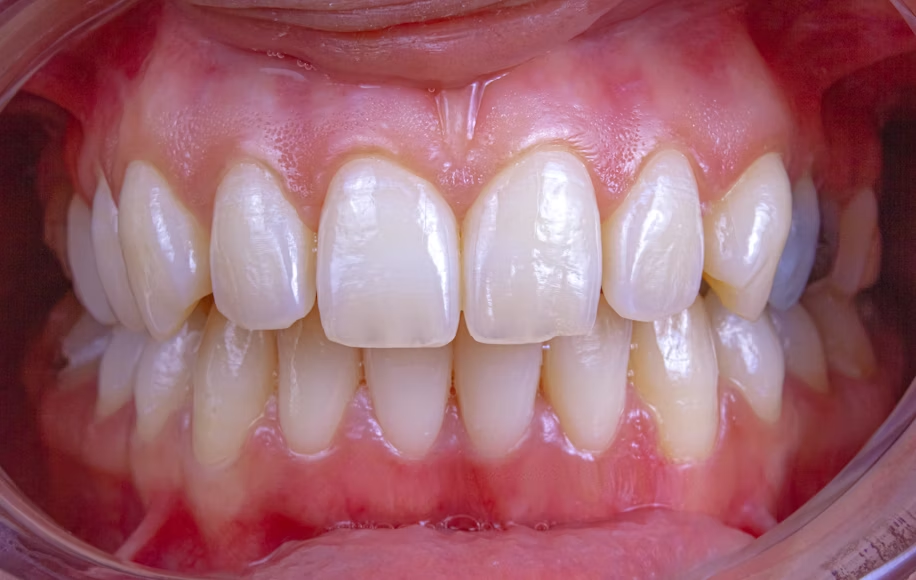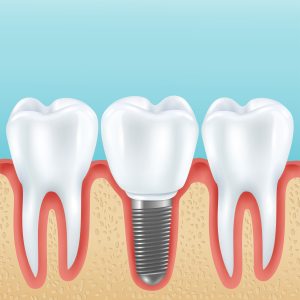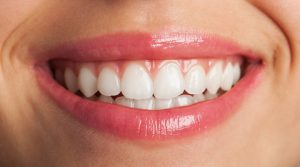Ever felt a sharp jolt of pain while sipping your favourite drink? Or experienced food lodging between your teeth more than usual, even with proper brushing and flossing? These could be early warning signs of a cavity forming between your teeth, known as an interproximal cavity.
Unlike surface cavities, interproximal cavities often go unnoticed. They hide between the tight spaces of your teeth, invisible to the naked eye, and silently worsen until they reach the deeper layers of the tooth.
In this blog, we’ll walk you through the common symptoms, treatment options, and prevention tips to help you spot and manage cavities between teeth before they become a bigger problem.
Table of Contents
What is a Cavity Between Teeth?
In dental terms, a cavity between teeth is known as dental caries. Dental caries refers to a microbiological infection that destroys the calcified tooth structure. These cavities present as holes or brown/black spots on the tooth surface. The affected tooth weakens over time and often fractures, even under normal biting pressure.
Interproximal caries specifically develop between two teeth, below the contact point, due to poor cleaning in hard-to-reach areas.
How Cavities Develop Between Teeth
Suboptimal cleaning leads to the formation of a biofilm in the interproximal area of the mouth. Bacteria in this biofilm thrive on sugars and carbohydrates and release acids that reduce the pH of the oral cavity, making it acidic. This acidic saliva erodes the calcified parts of the tooth, weakening its structure. Once the enamel starts to demineralize, the bacteria progress deep into dentin and pulp, resulting in sensitivity and tooth infection.
Risk Factors Contributing to Interproximal Caries
Certain factors can result in caries development and disease progression:
- A diet rich in sugars and carbohydrates
- Suboptimal dental cleaning between teeth, especially a lack of flossing
- Reduction in salivary flow contributes to caries formation (due to medication or conditions like xerostomia, which result in reduced or absent salivary flow)
- Crowding or malalignment makes it difficult to clean between teeth
- Smoking and alcohol consumption add to the risk of caries development
- Lack of routine cleanings and dental checkups
Symptoms of the Cavity Between Teeth
Cavities between teeth are not detected at early stages. However, once symptoms begin to surface, timely attention is important.
- Tooth sensitivity while consuming cold or hot beverages should not be ignored
- Persistent bad breath that lingers despite regular brushing indicates the presence of bacteria in the mouth
- Pain while biting or chewing can be a sign of a cavity between the molar teeth
- Brown or black discoloration between the teeth
- Constant food lodgment between specific teeth
- Bleeding from the gums or swelling in the interdental area
In moderate to severe cases, pain becomes a determining factor. Pain is a clear sign of pulp involvement and is often evident when sensitivity is initially ignored. With the progression of the disease, pain becomes more persistent.
Diagnosis of Cavities Between Teeth: How to Know If You Have A Cavity Between Teeth?
Symptoms are sufficient to suggest the presence of a cavity between the teeth, but for confirmation, a dentist requires both clinical and radiographic examinations. While a clinical exam pinpoints the cavity’s location, radiography is needed to assess its extent. Interproximal cavities are only visible in bitewing radiographs or by transillumination.
If you notice brown to black discoloration between your teeth, contact your cosmetic dentist immediately to rule out the possibility of a cavity.
Preventive Measures
Maintaining good oral hygiene is the first step in preventing interproximal decay.
- In addition to brushing, incorporate flossing into your routine regularly. This will help remove food lodged between the teeth.
- Use a fluoridated toothpaste.
- If you have tighter spaces between your teeth, consider investing in good water flossers or interdental brushes.
- Limit consumption of acidic and sugary foods.
- Prevent cavities in your kids’ newly erupted teeth with pit and fissure sealants and professional fluoride applications.
- Plan regular visits with your dentist at least twice a year to monitor your oral health.
- Get proper treatment for xerostomia or reduced salivary flow.
- Chlorhexidine mouthwash is recommended if you are prone to cavities or have a high bacterial load.
Treatment Options for Cavities Between Teeth
Treatment of dental caries depends on the extent of caries.
- Early Decay:
Early lesions typically halt and do not progress if fluoride varnish is applied promptly. This also aids in the remineralization of the structure.
- Mild to Moderate Decay: Without Pulp Involvement
For mild to moderate decay that has not yet extended to the pulp, restorations are recommended.
- Tooth-colored dental fillings: If caught early, dental caries can be removed, and the defect can be replaced with a tooth-colored filling, such as composite resin or GIC (Glass Ionomer Cement). Amalgam fillings are less popular these days because of their silver color and unesthetic appearance.
- Extensive Decay
Inlays and onlays are custom-fabricated restorations prepared in labs and are suggested for extensive decay or large cavities.
- Pulp Involvement
When pulp is infected, root canal therapy is necessary. Crown placement is usually indicated after root canal therapy to support the remaining structure.
When the prognosis is poor and the tooth is beyond saving, particularly with cavities in molars reaching the furcation areas, extraction is recommended as the last resort.
Final Thoughts
Cavities between teeth are often hard to detect and progress silently. One of the earliest signs is the food getting stuck in between specific teeth, causing a twinge. With good oral hygiene, mindful eating habits, and regular dental visits, the incidence can be reduced. Early intervention can make a huge difference.
Experience Pain-Free Treatments with a Cosmetic Dentist at Anoka Dental
At Anoka Dental, prevention and pain-free care come first. With advanced technology, a gentle approach, and personalized treatment plans, our team is committed to delivering exceptional dental care for every patient.
Don’t wait for pain to get worse; schedule an appointment with one of the leading Anoka dentists.
Call us at (763) 421-4002
Our address: 12 Bridge Sq # 106, Anoka, MN 55303, United States




